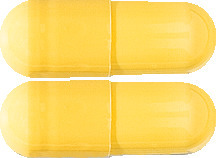1. Why am I using Gabapentin Sandoz?
Gabapentin Sandoz contains the active ingredient gabapentin. Gabapentin Sandoz is used to control epilepsy and treat neuropathic pain. For more information, see Section 1. Why am I using Gabapentin Sandoz? in the full CMI.
2. What should I know before I use Gabapentin Sandoz?
Do not use if you have ever had an allergic reaction to gabapentin or any of the ingredients listed at the end of the CMI.
Talk to your doctor if you have any other medical conditions, take any other medicines, or are pregnant or plan to become pregnant or are breastfeeding. For more information, see Section 2. What should I know before I use Gabapentin Sandoz? in the full CMI.
3. What if I am taking other medicines?
Some medicines may interfere with Gabapentin Sandoz and affect how it works. A list of these medicines is in Section 3. What if I am taking other medicines? in the full CMI.
4. How do I use Gabapentin Sandoz?
- Your doctor will tell you how many capsules you need to take each day. This may depend on your age, your condition and whether or not you are taking any other medicines.
- Swallow the capsules whole with a full glass of water.
More instructions can be found in Section 4. How do I use Gabapentin Sandoz? in the full CMI.
5. What should I know while using Gabapentin Sandoz?
| Things you should do |
|
| Things you should not do |
|
| Driving or using machines |
|
| Drinking alcohol |
|
| Looking after your medicine |
|
For more information, see Section 5. What should I know while using Gabapentin Sandoz? in the full CMI.
6. Are there any side effects?
Common side effects include dizziness, light-headedness, feeling tired, drowsy, unfriendliness, unusually overactive, forgetfulness, loss of concentration, confusion, difficulty speaking, weight change, constipation, diarrhoea, nausea, vomiting, indigestion, dry mouth, red swollen gums, muscle pain, cramps, back pain, swelling hand or feet, runny or blocked nose, fever, bronchitis, lung infection, sore throat, coughing. Serious side effects include unusual changes in mood or behaviour, increased irritability or agitation, depression, seeing or hearing things that are not there, blurred or double vision, uncontrollable jerky eye movements, difficulty seeing, fever, severe chills, sore throat or mouth ulcers, trouble breathing, loss of consciousness, severe seizures, chest pain, fast heart rate, sudden signs of allergy, severe skin rash, high body temperature enlarged lymph nodes. For more information, including what to do if you have any side effects, see Section 6. Are there any side effects? in the full CMI.

